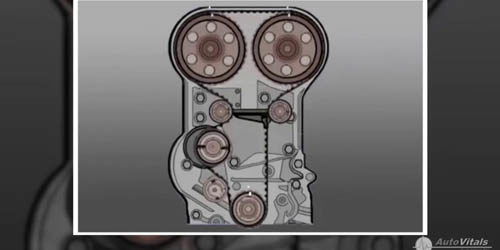When it comes to the intricate dance of automotive engineering, few components are as crucial yet often overlooked as the timing belt. In this guide, we’re diving deep into the world of timing belts, exploring their purpose, maintenance, and what happens when they go awry. Buckle up!
What is a Timing Belt?
The timing belt is a reinforced rubber band that plays a pivotal role in the engine’s operation. It synchronizes the rotation of the crankshaft and camshaft, ensuring that the engine’s valves open and close at the proper intervals during each cylinder’s intake and exhaust strokes. Think of it as the conductor of an orchestra, harmonizing the performance of various engine components.
Why is the Timing Belt Important?
- Engine Performance: A well-functioning timing belt ensures optimal engine performance, allowing for smooth operation and maximum efficiency.
- Preventing Engine Damage: If a timing belt fails, it can lead to catastrophic engine failure, often resulting in bent valves, damaged pistons, or worse.
- Longevity: Regular maintenance and timely replacement of the timing belt can significantly extend the life of your engine.
Signs of a Failing Timing Belt
Recognizing the signs of a failing timing belt can save you from costly repairs. Here are some red flags to watch out for:
- Ticking Noise: A persistent ticking noise coming from the engine can indicate a worn timing belt.
- Engine Misfiring: If your engine starts misfiring or running rough, it could be due to a timing issue.
- Oil Leaks: Timing belt covers can develop leaks, leading to oil pooling in the engine.
- Visible Wear: Physical inspection may reveal cracks, fraying, or other signs of wear.
How Often Should You Replace Your Timing Belt?
Replacement intervals vary by vehicle make and model, but a common guideline is every 60,000 to 100,000 miles. Always refer to your vehicle’s owner manual for specific recommendations.
Steps for Timing Belt Replacement
Replacing a timing belt is a complex task that often requires a professional touch. However, for the curious DIY mechanic, here’s a high-level overview of the steps involved:
- Gather Tools: Ensure you have the necessary tools, including wrenches, a jack, and a timing belt kit.
- Remove the Old Belt: Disconnect the battery, remove the necessary components, and carefully take off the old timing belt.
- Install the New Belt: Align the new timing belt with the crankshaft and camshaft pulleys, ensuring proper tension.
- Reassemble: Replace all removed components and reconnect the battery.
Common Myths About Timing Belts
As with many automotive topics, timing belts are surrounded by myths. Let’s debunk a few!
- Myth 1: Timing belts last forever.
Reality: They have a limited lifespan and need regular replacement. - Myth 2: All vehicles use timing belts.
Reality: Many use timing chains, which are different and often more durable. - Myth 3: It’s okay to ignore a worn timing belt.
Reality: Ignoring it can lead to severe engine damage.
The timing belt may not be the most glamorous part of your vehicle, but its importance cannot be overstated. By understanding its role, recognizing the signs of wear, and adhering to replacement schedules, you can ensure a robust and efficient engine. Next time you hear that rhythmic hum of your engine, remember the silent hero working tirelessly beneath the hood – the timing belt.
So, whether you’re a seasoned mechanic or a novice car owner, keeping your timing belt in check is essential for a smooth ride. Happy driving!

